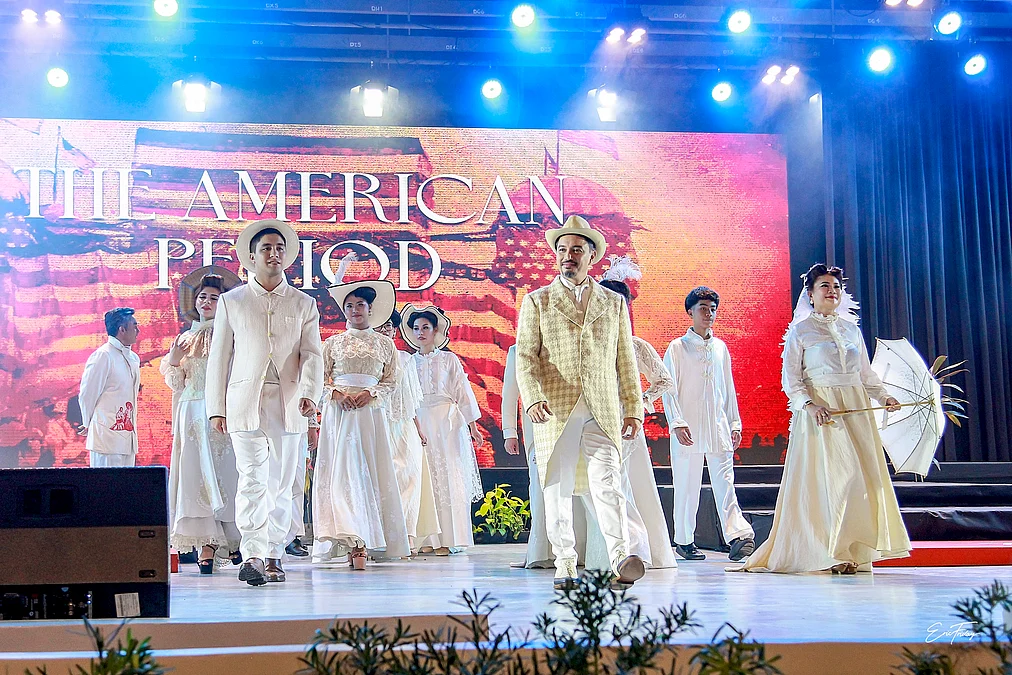By C. Mendez Legaspi
Copyright tribune

When it was known as Bagumbayan and Luneta, the historic area now known as Rizal Park was the center of social activity and the place to be, the happening place in Manila. “The word pasyal in Filipino actually comes from the Spanish word pasear, which means to stroll, to promenade, to take a walk. So. for generations this park has been a stage for fashion, a place to be seen, a place where style comes alive,” said Gaius Apelar, the deputy executive director of the National Parks Development Committee (NPDC).At the opening of “Styling History: Fashion at the Park by Lito Perez,” a fashion showcase by the veteran designer held on 31 August at the Rizal Park Open Air Auditorium, Apelar also reminded the audience that our style is a reflection of our resilience and our ability to beautifully blend different influences into something uniquely our own, something uniquely Filipino.. “Tonight, we celebrate the rich tapestry of Filipino style and history. We celebrate the creativity of the past and the inspiration it gives us today. We are reminded that fashion is a powerful way to express who we are and what we believe in,” Apelar added. “I have insisted on concentrating my ethos on the Filipino costume. The national dress of the Philippines is a very vibrant and living national dress which keeps on evolving, borrowing from external fashions but retaining its inherent Filipino flavor,” explained Perez. “I believe it’s an evolving creature making itself relevant to the times as necessity dictates. I love the historicity and elegance of the terno and the traje de mestiza. ‘Styling History’ is my outlet in showing my ideas to my audience that our national dress is not boring.” . Fascination with Filipino historyThe project was conceptualized by Perez’s granddaughter, Danielle Perez, and her former teacher. Paul John del Rosario Hernandez, who works at Rizal Park as a tour guide and is a well-known vlogger with his vlog The Traveling Salakot. Hernandez revealed that “Styling History” serves as a soft launch for the NPDC’s initiative for tourists to be able to rent and wear traditional Filipino clothing for a full cultural appreciation during their visit, much like what is offered in Thailand, South Korea and Japan. . “I felt Camp Suki, my shop of 47 years, and my personal advocacy, Villa Tortuga in Taal, both needed new marketing strategies. They came up with the idea of a show in Rizal Park at the open-air theater. PJ contacted NPDC and they graciously agreed to sponsor the venue,” shared Perez. “My friend, fashion director Nathan de Leon, concocted ‘Styling History’ to homogenize my concept of showing the history of Luneta through fashion. Thus came the show!” He further said, “I have always been fascinated by history. I love collecting antiques. Costume parties have always been my thing since my college days. That’s how Camp Suki came about. Through the years, it has been the traditional go-to for costumes and avant-garde fashion.”Before becoming a vanguard of local design and one of the past presidents of the Fashion Designers Association of the Philippines when it still mattered, Perez went to the University of the Philippines and finished interior design in 1982. “But my real love was fashion and I had the Camp Suki shop already way back in 1978 but was not serious about it yet,” Perez pointed out. “But who was serious at the time when you are freshly out of college, discoing almost every night at Coco Banana?” A history of style “Styling History” was divided into five suites, signifying the eras that inspired Perez. “Dongos” depicted the arrival of the Spaniards to our shores. “Bagumbayan” showed the old town outside the walls of Intramuros, from where Luneta was carved out, becoming the city’s promenade and premier gathering place for the elite. “Handog” recalled the executions of GomBurZa in 1872 and of Dr. Jose Rizal in 1886, the Martyrs of Bagumbayan. The “American Era,” which began in 1899, came with free public education and the razzmatazz of Yankee culture. It showed Old Manila with Americans in Luneta, more specifically the Thomasites. . Then came “Carnival Queens,” which celebrated the diverse beauties of Filipino women before the Second World War. Perez enlisted as models his fashion muses loyal clients such as Cat Ting Garza, Jonalyn Gutierrez, Elizabeth Gilbert, Selim Nastor, Isabel Tique, Minerva Racuya, Romina Gosamo, Linda Moya, Mildred Vitangcol and Rose Santiago Licup. “I love using mature models as they understand more the refinement of the Filipina dress. But the youth express themselves more outlandishly and more forward in their take on the terno. But as I said, history has always been my love from an early age,” stressed Perez. “Anyway, I believe designers are having a tougher time now with foreign competition at our doorstep and lack of capital. This is the number-one hindrance for a designer to express their art,” Perez reflected. “But despite these obstacles, our young generation always finds ways to produce great fashion creations!”